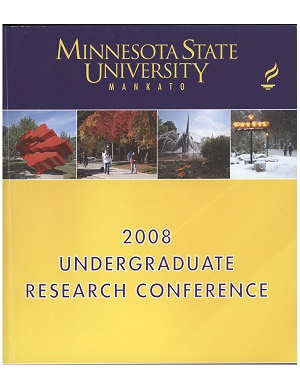The Effect of Corrosion and Cracks on the Safety of Steel Bridges
Location
CSU 284
Start Date
21-4-2008 8:00 AM
End Date
21-4-2008 10:00 AM
Student's Major
Mechanical and Civil Engineering
Student's College
Science, Engineering and Technology
Mentor's Name
Karen Chou
Mentor's Department
Mechanical and Civil Engineering
Mentor's College
Science, Engineering and Technology
Description
The motivation behind this research was the recent collapse of the I-35W Bridge in Minneapolis, MN. The purpose of this project was to build models of single-span bridges to examine the change in their deflections due to corrosion and cracks. Four linear variable differential transmitters (LVDTs) were carefully calibrated and used to measure the deflections of the bridge models. The L VDTs were connected to a Vishay scanner and their outputs were recorded using Strain Smart software. All bridge models were tested by hanging known loads from the bridge and then measuring the corresponding deflections. The bridge models were first tested without any simulated corrosion or cracks. The theoretical deflections of the perfect models were calculated using standard beam deflection equations. Experimental deflection results were compared to theoretical values for consistency and to detect any unforeseen problems with the testing setup. Cracks were then introduced into the bridge models by milling away a measured portion of the steel models. Next, corrosion was induced by exposing the bridge models to a mixture of nitric acid and calcium chloride. The defective bridge models were loaded in the same manner as the perfect bridge models to determine the additional deflection caused due to cracking or corrosion. Current bridge inspection is based solely on visual examination. The results of this study suggest that in-situ deflection data should be used in combination with visual inspection to better locate areas of a bridge with potentially tragic structural deficiencies.
The Effect of Corrosion and Cracks on the Safety of Steel Bridges
CSU 284
The motivation behind this research was the recent collapse of the I-35W Bridge in Minneapolis, MN. The purpose of this project was to build models of single-span bridges to examine the change in their deflections due to corrosion and cracks. Four linear variable differential transmitters (LVDTs) were carefully calibrated and used to measure the deflections of the bridge models. The L VDTs were connected to a Vishay scanner and their outputs were recorded using Strain Smart software. All bridge models were tested by hanging known loads from the bridge and then measuring the corresponding deflections. The bridge models were first tested without any simulated corrosion or cracks. The theoretical deflections of the perfect models were calculated using standard beam deflection equations. Experimental deflection results were compared to theoretical values for consistency and to detect any unforeseen problems with the testing setup. Cracks were then introduced into the bridge models by milling away a measured portion of the steel models. Next, corrosion was induced by exposing the bridge models to a mixture of nitric acid and calcium chloride. The defective bridge models were loaded in the same manner as the perfect bridge models to determine the additional deflection caused due to cracking or corrosion. Current bridge inspection is based solely on visual examination. The results of this study suggest that in-situ deflection data should be used in combination with visual inspection to better locate areas of a bridge with potentially tragic structural deficiencies.
Recommended Citation
Marr, Christopher M.. "The Effect of Corrosion and Cracks on the Safety of Steel Bridges." Undergraduate Research Symposium, Mankato, MN, April 21, 2008.
https://cornerstone.lib.mnsu.edu/urs/2008/oral-session-02/4



